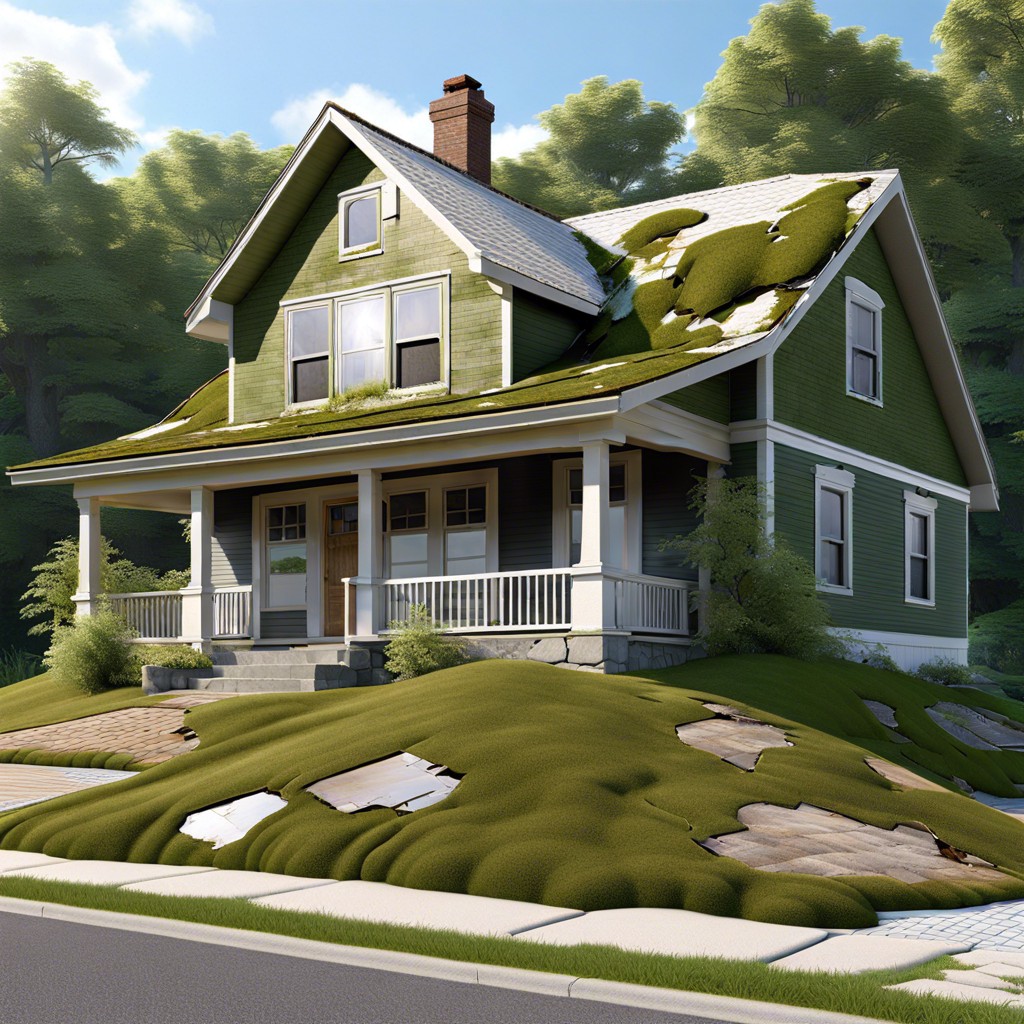Last updated on
This article provides guidelines on how often you should consider replacing your roof, based on various factors.
Key takeaways:
- Signs that indicate the need for a roof replacement.
- Factors that affect the lifespan of a roof.
- Common roofing materials and their lifespans.
- Importance of regular roof inspections and maintenance.
- Deciding between repairing or replacing your roof.
Signs That Indicate the Need for a Roof Replacement

Curled or cracked shingles are telltale signs that your roof is feeling its age. Exposure to elements can cause shingles to degrade, losing their protective efficacy. If your shingles look more like a curling iron has had its way with them, it’s a nudge for you to plan a replacement.
Missing shingles also raise a red flag. This not only compromises the roof’s integrity but directly exposes your home to water damage. It’s like missing a piece in a puzzle; without it, the picture isn’t complete, and water can find its way in.
Check for daylight through the roof boards while you’re in the attic. If you see light peeking through, this is a direct SOS from your roof. It means the insulation is compromised, likely increasing heating or cooling costs, and it’s an invitation for water to waltz in uninvited.
Lastly, a sagging roof is akin to a smile with missing teeth—an obvious distress signal. This indicates structural issues, perhaps from long-term weight, water damage, or rot. Addressing it sooner rather than later can avert potential larger catastrophes.
Factors That Affect the Lifespan of a Roof
Several elements can influence how long your roof lasts before needing replacement.
First, the material of the roof plays a crucial role. Asphalt shingles, for instance, have a different lifespan compared to metal roofing or slate tiles, which can last much longer.
Climate is another vital factor. Roofs in areas with severe weather conditions, such as heavy snow, hurricanes, or extreme heat, may degrade faster than those in more temperate climates.
Proper installation is key. A roof that is not correctly installed can lead to premature failure, regardless of the quality of materials used.
Finally, the level of maintenance can significantly extend or reduce the life of a roof. Regular cleaning, timely repairs, and proactive inspections can help maximize a roof’s lifespan.
Common Roofing Materials and Their Lifespan
Asphalt shingles are the most popular choice for homeowners due to their affordability and ease of installation. Typically, they last between 15 to 30 years depending on weather conditions and maintenance efforts.
Metal roofs, while more costly upfront, boast a longer lifespan, ranging from 40 to 70 years. Their durability and resistance to extreme weather make them a cost-effective option over time.
Clay and concrete tiles offer a distinct aesthetic and can endure for over 50 years. They excel in hot climates and are resistant to rot and fire but can be heavy and require a sturdy structural support.
Wood shingles, known for their natural appearance, generally last around 20 to 25 years. They require regular maintenance to prevent issues such as mold and decay.
Slate roofing stands out for its natural beauty and longevity, with a lifespan extending up to 100 years if properly maintained. However, it is among the more expensive materials and also quite heavy, necessitating extra roof support.
Each material has its merits and considerations, so choosing the right one depends on your specific needs, climate, and budget. Regular inspections and maintenance remain key to extending the life of any roofing material.
Importance of Regular Roof Inspections and Maintenance
Regular inspections are vital for catching potential roof issues early. A small problem, like a missing shingle, can evolve into a serious leak if ignored. Ideally, have your roof inspected twice a year, in spring and fall. This timing helps ensure repairs are done before extreme weather like winter storms.
Proper maintenance extends a roof’s lifespan. This includes cleaning gutters, removing debris, and trimming overhanging tree branches. These actions prevent water buildup and physical damage that can compromise your roof’s integrity.
By staying proactive with inspections and maintenance, homeowners can save money. Early detection typically means simpler, more cost-effective repairs. Conversely, neglect can lead to costly, extensive damage, emphasizing the wisdom in the saying, “A stitch in time saves nine.”
Repairing Vs. Replacing Your Roof
Deciding between repairing or replacing your roof hinges on several key factors. First, consider the age of your roof. If it’s nearing the end of its expected lifespan, a full replacement might be a wiser investment than repetitive minor repairs.
Next, asses the extent of damage. Small issues like a few missing shingles are generally manageable with repairs. However, widespread damage, especially if there’s a risk of structural compromise, often necessitates replacement to maintain home safety and integrity.
Also, think about the cost implications. Although repairs typically cost less upfront, frequent fixes can add up, making replacement more cost-effective in the long run. Lastly, consider the aesthetic impact on your home. Significant repairs might affect the roof’s appearance, potentially impacting your home’s overall look and value.
Balancing these factors will guide you to the most appropriate decision for your situation.




